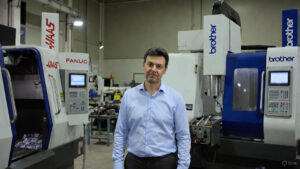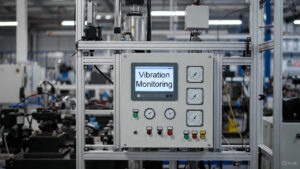Overview
Industrial communication protocols are essential for connecting machine assets and manufacturing systems. These protocols enable visibility into production performance and machine health by automating data collection and ensuring interoperability between diverse systems.
Key Industrial communication protocol supported by Smart Supervisor IIoT Gateway
1. OPC UA (Open Platform Communications Unified Architecture)
How It Works:
OPC UA is a machine-to-machine communication protocol for industrial automation developed by the OPC Foundation. It ensures secure and reliable data exchange between machines from different manufacturers.
Features:
- Interoperability: Facilitates seamless communication between various industrial devices.
- Security: Implements strong security measures, including authentication, encryption, and auditing.
- Scalability: Suitable for small-scale systems as well as large industrial operations.
Benefits:
- Machine-to-Enterprise Communication: Connects machines directly to enterprise-level systems, allowing for better integration and data flow.
- Real-Time Monitoring: Enables continuous monitoring and data collection, improving decision-making and operational efficiency.
- Data Logging: Store critical & non critical data to desired server & cloud system.
- Machine to Machine Communication: Establish communication between multiple machines for exchange of information & data.
2. EtherNet/IP (Ethernet Industrial Protocol)
How It Works:
EtherNet/IP adapts the Common Industrial Protocol (CIP) to standard Ethernet, enabling the seamless flow of information between industrial devices and systems.
Features:
- Standard Ethernet: Utilizes standard Ethernet hardware and software, making it easy to implement and scale.
- Device Interoperability: Allows different devices and systems to communicate over the same network.
Benefits:
- High-Speed Data Transmission: Ensures fast and reliable data exchange, crucial for time-sensitive industrial processes.
- Internet and Enterprise Connectivity: Integrates industrial networks with enterprise systems, facilitating better data management and analysis.
3. Modbus
How It Works:
Modbus is a communication protocol originally published by Modicon (now Schneider Electric) in 1979. It is used for transmitting information over serial lines between electronic devices.
Variants:
- Modbus RTU (Remote Terminal Unit): A binary protocol commonly used for serial communication.
- Modbus TCP/IP: Uses TCP/IP for communication over Ethernet, allowing for integration with modern networks.
Benefits:
- Simplicity and Reliability: Known for its straightforward implementation and robust performance.
- SCADA Integration: Widely used in SCADA systems for monitoring and control.
4. MTConnect
How It Works: MTConnect is a standard for data exchange in manufacturing, providing a vocabulary to describe machine data. It is designed to connect devices and systems using a standardized XML-based format.
Features:
- Standardized Communication: Ensures consistent data representation across different devices.
- Extensible: Can be adapted to various manufacturing environments and requirements.
Benefits:
- Interoperability: Enables different machines and systems to communicate effectively.
- Enhanced Data Analysis: Facilitates better data collection and analysis, improving operational insights.
5. Siemens CNC Protocol
How It Works:
Siemens CNC Protocols, including SINUMERIK, facilitate the integration of CNC machines with various automation systems. These protocols enable advanced machine tool communication and data exchange.
Features:
- High Performance: Supports advanced CNC functionalities and real-time data exchange.
- Flexibility: Compatible with various CNC machine configurations and network setups.
Benefits:
- Increased Productivity: Enhances machine tool performance and efficiency.
- Seamless Integration: Ensures smooth communication between CNC machines and other industrial systems.
6. Fanuc FOCAS
How It Works:
Fanuc FOCAS is a communication protocol for Fanuc CNC machines. It enables data exchange between CNC controllers and external systems for monitoring and control.
Features:
- Real-Time Data Access: Provides access to machine status, operational data, and alarms.
- Wide Compatibility: Supports various Fanuc CNC models and configurations.
Benefits:
- Improved Monitoring: Enhances visibility into machine operations and performance.
- Efficient Maintenance: Facilitates remote diagnostics and troubleshooting.
7. Mitsubishi Melsec Protocol
How It Works:
Mitsubishi Melsec Protocol is used for communication with Mitsubishi PLCs. It supports data exchange and control commands for various industrial applications.
Features:
- Reliable Communication: Ensures robust data transfer between PLCs and other devices.
- Scalability: Suitable for small-scale to large-scale industrial setups.
Benefits:
- Enhanced Control: Provides precise control and monitoring of industrial processes.
- Flexible Integration: Compatible with a wide range of Mitsubishi PLC models.
8. Serial RS232
How It Works:
RS232 is a standard for serial communication transmission of data. It is commonly used for connecting computers and peripheral devices.
Features:
- Simple Wiring: Utilizes simple wiring configurations for data transmission.
- Wide Usage: Extensively used in industrial and consumer applications.
Benefits:
- Cost-Effective: Provides a low-cost solution for serial communication needs.
- Ease of Use: Simple to implement and troubleshoot.
9. EtherCAT Protocol
How It Works:
EtherCAT (Ethernet for Control Automation Technology) is an Ethernet-based fieldbus system designed for real-time industrial automation applications.
Features:
- High Performance: Delivers fast data transmission and low latency.
- Flexibility: Supports various network topologies and configurations.
Benefits:
- Real-Time Control: Ensures precise and real-time control of industrial processes.
- Scalability: Easily scalable to accommodate expanding industrial networks.
10. BACnet Protocol
How It Works:
BACnet (Building Automation and Control Network) is a data communication protocol for building automation and control networks.
Features:
- Interoperability: Allows integration of building automation systems from different manufacturers.
- Scalability: Suitable for small to large building automation systems.
Benefits:
- Energy Efficiency: Facilitates efficient building management and energy usage.
- Enhanced Monitoring: Provides comprehensive monitoring of building systems.
11. DeviceNet Protocol
How It Works:
DeviceNet is a communication protocol used in industrial automation to connect control devices such as sensors and actuators to a network.
Features:
- Network Flexibility: Supports various network topologies and device types.
- Robust Performance: Ensures reliable communication in industrial environments.
Benefits:
- Simplified Wiring: Reduces wiring complexity and installation costs.
- Improved Control: Enhances the control and monitoring of industrial devices.
12. MQTT Protocol
How It Works:
MQTT (Message Queuing Telemetry Transport) is a lightweight messaging protocol designed for small sensors and mobile devices optimized for high-latency or unreliable networks.
Features:
- Efficient Messaging: Uses a publish/subscribe model for efficient message delivery.
- Low Bandwidth: Operates effectively with low bandwidth and high latency.
Benefits:
- Scalable Communication: Ideal for IoT and M2M communication.
- Reliable Data Transfer: Ensures reliable data transfer in challenging network conditions.
13. REST API
How It Works:
REST (Representational State Transfer) API is an architectural style for designing networked applications. It uses HTTP requests to access and manipulate data.
Features:
- Standardized Communication: Utilizes standard HTTP methods for communication.
- Stateless Operations: Each request from a client contains all the information needed to process the request.
Benefits:
- Ease of Integration: Simple to integrate with various web services and applications.
- Flexible Access: Allows for flexible and efficient data access and manipulation.
Built-in Protocols for data acquisition

















The list goes on..
Why Use Industrial Communication Protocols?
Industrial communication protocols are crucial for ensuring seamless connectivity between machines, devices, and systems. These protocols overcome data silos and drive industrial automation by enabling connected PLCs, machine controls, HMIs, sensors, and systems.
Benefits of Using IIoT Gateways with Industrial Protocols
- Enhanced Connectivity: Ensure seamless integration of various machine assets.
- Real-Time Data Collection: Automate data collection at the edge for immediate insights.
- Improved Efficiency: Enable remote diagnostics, monitoring, and optimization.
- Scalability: Easily connect to any make and model of equipment.
Supporting Various Equipment and Devices
Autobits’ IIoT Gateways support a wide range of equipment and devices, including:
- PLCs
- CNC Machines
- SCADA Systems
- DCS System
- Machine Controls
- HMIs
- Sensors
- Robots
- Controllers
- VFD (Variable Frequency drives)
- Energy Meters
- Generator sets
- & much more

Real-World Application: Smart Supervisor IIoT Gateway
Scenario:
A leading manufacturing plant needed a solution to monitor and optimize their machine assets remotely. Traditional methods were inefficient and led to significant downtimes.
Solution:
By integrating the Smart Supervisor IIoT Gateway with OPC UA and Modbus protocols, the plant achieved real-time data collection and remote diagnostics. This enabled them to:
- Monitor machine health continuously.
- Receive instant alerts for any anomalies.
- Optimize machine performance remotely.
Outcome:
The plant saw a 30% reduction in maintenance costs and a 25% increase in operational efficiency.
Conclusion
Industrial communication protocols are the backbone of modern industrial automation. With Autobits’ IIoT Gateways, you can leverage these protocols to enhance connectivity, automate data collection, and drive actionable insights. Contact us today to learn how we can help you achieve seamless industrial communication and optimization.





